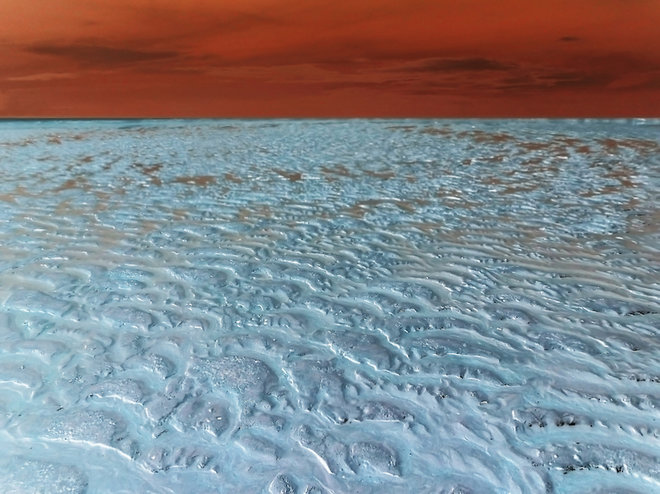A Ticking Time Bomb of Mercury Is Hidden Beneath Earth’s Permafrost
ENVIRONMENT, 12 Feb 2018
Brandon Specktor | Live Science – TRANSCEND Media Service

Climate change could unleash 15 million gallons of mercury trapped in permafrost. And that’s just in the Northern Hemisphere.
Credit: TheVagabond V.Schaal/Shutterstock
6 Feb 2018 – When the mercury’s rising in your thermometer, it may also be rising in the ocean.
According to a new study published Feb. 5 in the journal Geophysical Research Letters, there may be more than 15 million gallons (58 million liters) of mercury buried in the permafrost of the Northern Hemisphere — roughly twice as much mercury as can be found in the rest of Earth’s soils, ocean and atmosphere combined. And if global temperatures continue to rise, all that mercury could come pouring out.
In geology, permafrost is defined as any soil that has been frozen for more than two years. In the Northern Hemisphere, permafrost accounts for about 8.8 million square miles (22.79 million square kilometers) of land — or roughly 24 percent of exposed Earth, according to the National Snow and Ice Data Center. Over time, naturally occurring compounds in the atmosphere, such as mercury and carbon dioxide, can bind with organic material in the soil and be frozen into permafrost, potentially remaining trapped underground for thousands of years before it thaws, the new paper said. [5 Deadly Diseases Emerging From Global Warming]
In the study, researchers drilled 13 permafrost soil cores from various sites in Alaska between 2004 and 2012. Then, they measured the total amounts of mercury and carbon in each sample, which proved consistent with thousands of other soil cores taken from other sites around the world, the paper said. Using the mercury contents of their 13 cores as a springboard, the researchers estimated the total amount of mercury sealed away below North American permafrost to be roughly 793 gigagrams — or more than 15 million gallons.
“There would be no environmental problem if everything remained frozen, but we know the Earth is getting warmer,” study author Paul Schuster, a hydrologist at the U.S. Geological Survey in Boulder, Colorado, said in a statement. “This discovery is a game-changer.”
Researchers have already observed climate-change-induced permafrost thawing, and there is likely more on the way: According to a 2013 study, the Northern Hemisphere will lose anywhere from 30 to 99 percent of its permafrost by 2100, assuming current human greenhouse-gas emissions continue unabated.
Previous studies have attempted to account for the billions of tons of carbon dioxide, methane and even “zombie pathogens” that could be loosed into the air and the oceans by melting permafrost. The environmental impact of a large-scale mercury leak, however, remains an unpredictable problem.
One major concern is that this trapped mercury could seep into nearby waterways and transform into methylmercury, a toxin that can cause motor impairment and birth defects in animals, Edda Mutter, science director for the Yukon River Inter-Tribal Watershed Council, said in a statement. Such contamination could travel swiftly up the food chain from microorganisms to humans, said Mutter, who was not involved in the new study.
“Rural communities in Alaska and other northern areas have a subsistence lifestyle, making them vulnerable to methylmercury contaminating their food supply,” Mutter added.
The researchers are currently working on a follow-up study modeling the release of permafrost due to climate change, according to the statement.
Go to Original – livescience.com
DISCLAIMER: The statements, views and opinions expressed in pieces republished here are solely those of the authors and do not necessarily represent those of TMS. In accordance with title 17 U.S.C. section 107, this material is distributed without profit to those who have expressed a prior interest in receiving the included information for research and educational purposes. TMS has no affiliation whatsoever with the originator of this article nor is TMS endorsed or sponsored by the originator. “GO TO ORIGINAL” links are provided as a convenience to our readers and allow for verification of authenticity. However, as originating pages are often updated by their originating host sites, the versions posted may not match the versions our readers view when clicking the “GO TO ORIGINAL” links. This site contains copyrighted material the use of which has not always been specifically authorized by the copyright owner. We are making such material available in our efforts to advance understanding of environmental, political, human rights, economic, democracy, scientific, and social justice issues, etc. We believe this constitutes a ‘fair use’ of any such copyrighted material as provided for in section 107 of the US Copyright Law. In accordance with Title 17 U.S.C. Section 107, the material on this site is distributed without profit to those who have expressed a prior interest in receiving the included information for research and educational purposes. For more information go to: http://www.law.cornell.edu/uscode/17/107.shtml. If you wish to use copyrighted material from this site for purposes of your own that go beyond ‘fair use’, you must obtain permission from the copyright owner.